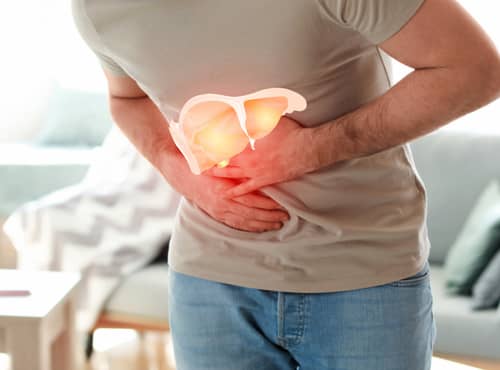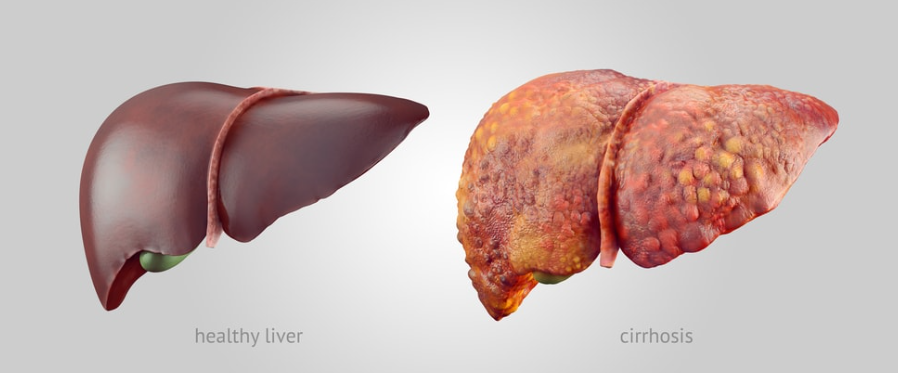
Liver Diseases Problem
Your liver does a lot of things that keep you healthy. It turns nutrients into chemicals your body needs. It filters out poisons. It helps turn food into energy. So when your liver doesn’t work well, that can affect your whole body.
Liver disease is a general term that refers to any condition affecting your liver. These conditions may develop for different reasons, but they can all damage your liver and affect its function.
Liver disease symptoms vary, depending on the underlying cause. It’s also possible for someone to have liver disease and not have any symptoms at all.
These include:
- Yellowish skin and eyes, known as jaundice
- Pale, bloody, or black stools
- Enlarged stomach due to ascites, which may make it uncomfortable to lie down or eat
- Encephalopathy, a brain issue resulting in marked changes in mood, sleep, and cognition

Common liver problems:
Hepatitis
Hepatitis is defined as an inflammation of the liver. When that inflammation is caused by a virus, it’s referred to as viral hepatitis. Hepatitis can cause liver damage, making it difficult for your liver to function as it should
Five types of hepatitis include:
Liver diseases due to genetic conditions: Some genetic conditions can cause some liver problems.Hereditary hemochromatosis promotes the storage of excess iron in the organs.
Autoimmune Liver Disease: In some rare cases, when body’s immune system attacks healthy cells due to various reasons. The attack on healthy liver tissue can result in inflammation and scarring of the tissue. Autoimmune liver condition includes primary biliary cholangitis (PBC), primary sclerosing cholangitis (PSC) and autoimmune hepatitis.
Cirrhosis: Cirrhosis refers to scarring that results from liver diseases and other causes of liver damage, such as alcohol use disorder. Cystic fibrosis and syphilis may also lead to liver damage and, eventually, cirrhosis — although these two causes are much less common. Your liver can regenerate in response to damage, but this process usually results in the development of scar tissue. The more scar tissue that develops, the harder it is for your liver to function properly. In its early stages, cirrhosis is often treatable by addressing the underlying cause. But without management, it can lead to other complications and become life threatening.
Infections: Some infections can cause liver disease. Some of the most common infections are caused by toxoplasmosis, cytomegalovirus, adenovirus and Epstein Barr virus.
- Hepatitis A. Hepatitis A is typically spread through contact with contaminated food or water. Symptoms may clear up without treatment, but recovery can take a few weeks.
- Hepatitis B. This type of viral hepatitis can be acute (short-term) or chronic (long-term). It’s spread through bodily fluids, such as blood and semen. While hepatitis B is treatable, there’s no cure for it. Early treatment is key to avoiding complications, so it’s best to get regular screenings if you’re at risk.
- Hepatitis C. . Hepatitis C can also be acute or chronic. It’s often spread through contact with blood from someone with hepatitis C. While it often doesn’t cause symptoms in its early stages, it can lead to permanent liver damage in its later stages.
- Hepatitis D. This is a serious form of hepatitis that only develops in people with hepatitis B — it can’t be contracted on its own. It can also be either acute or chronic.
- Hepatitis E. Hepatitis E is usually caused by drinking contaminated water. Generally, it clears up on its own within a few weeks without any lasting complications.
- Alcoholic fatty liver disease, which is caused by heavy alcohol consumption.
- Nonalcoholic fatty liver disease, which is caused by other factors experts are still trying to understand.
Liver diseases due to genetic conditions: Some genetic conditions can cause some liver problems.Hereditary hemochromatosis promotes the storage of excess iron in the organs.
Autoimmune Liver Disease: In some rare cases, when body’s immune system attacks healthy cells due to various reasons. The attack on healthy liver tissue can result in inflammation and scarring of the tissue. Autoimmune liver condition includes primary biliary cholangitis (PBC), primary sclerosing cholangitis (PSC) and autoimmune hepatitis.
Cirrhosis: Cirrhosis refers to scarring that results from liver diseases and other causes of liver damage, such as alcohol use disorder. Cystic fibrosis and syphilis may also lead to liver damage and, eventually, cirrhosis — although these two causes are much less common. Your liver can regenerate in response to damage, but this process usually results in the development of scar tissue. The more scar tissue that develops, the harder it is for your liver to function properly. In its early stages, cirrhosis is often treatable by addressing the underlying cause. But without management, it can lead to other complications and become life threatening.
Infections: Some infections can cause liver disease. Some of the most common infections are caused by toxoplasmosis, cytomegalovirus, adenovirus and Epstein Barr virus.
Liver diseases diagnosis
Liver Diseases Diagnosis is start by looking over medical history and asking about any family history of liver problems. Next, they’ll likely ask some questions about symptoms you may be experiencing, including when they started and whether certain things make them better or worse.
Depending on your symptoms, they’ll likely ask you about your drinking and eating habits. Make sure to also tell them about any prescription or over-the-counter medications you take, including vitamins and supplements.
Once they’ve collected all this information, they may recommend:
- Liver function tests
- A complete blood count test
- CT scans, MRIs, or ultrasounds to check for liver damage or tumors
- A liver biopsy, which involves removing a small sample of your liver and examining it for signs of damage or disease

